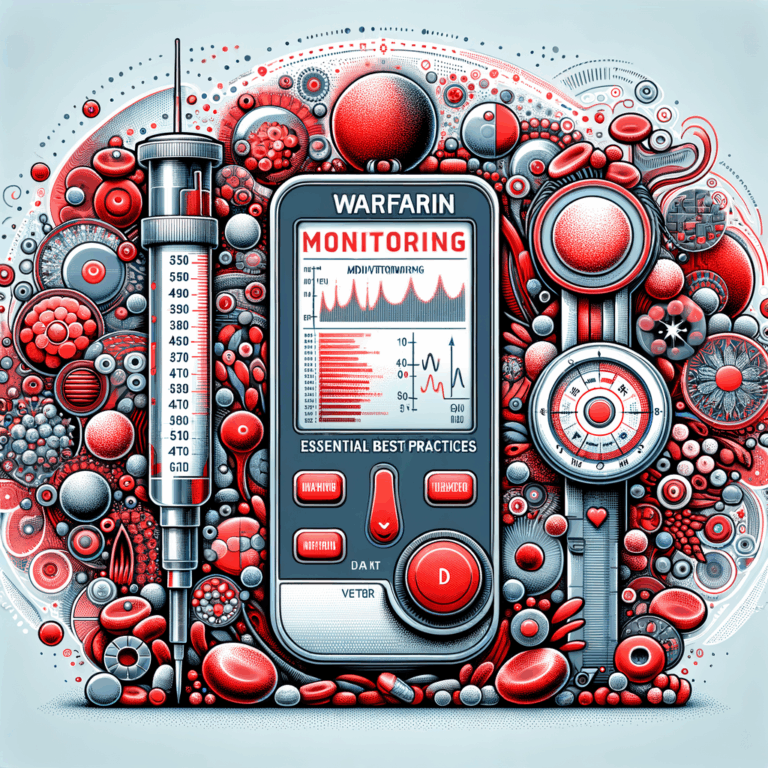
- Understanding Panic Disorder and Why Effective Treatment Matters
- What Is Clonazepam?
- How Clonazepam Works for Panic Disorder
- Effectiveness: What the Research Says
- Choosing Clonazepam vs. Other Medications
- Dosage Guidelines and Administration
- Typical dosing schedule
- Onset and Duration of Effect
- Benefits of Clonazepam for Panic Disorder
- Risks, Side Effects, and Precautions
- Common side effects
- Serious risks
- Dependence, Tolerance, and Withdrawal: What to Expect
- Typical withdrawal symptoms
- Strategies to Reduce Dependence Risk
- Combining Clonazepam with Therapy
- Special Populations: Older Adults, Pregnancy, and Children
- Interactions With Other Substances
- Practical Tips for Safe Use
- How Clinicians Decide Treatment Plans
- Alternative and Complementary Treatments
- List of common non-drug options
- When to Seek Emergency Help
- Real-World Patient Experiences
- How to Talk to Your Doctor About Clonazepam
- Sample Questions to Ask Your Clinician
- Managing Side Effects and Next Steps
- Cost, Insurance, and Access
- Summary: Who Should Consider Clonazepam?
- Conclusion
- Frequently Asked Questions (FAQs)
- 1. Can clonazepam cure panic disorder?
- 2. How long does it take for clonazepam to start working?
- 3. Will clonazepam make me feel drunk or out of control?
- 4. Can I use clonazepam long-term for panic disorder?
- 5. What happens if I suddenly stop taking clonazepam?
- 6. Is clonazepam addictive?
- 7. Are there safe alternatives to clonazepam?
- 8. Can I drink alcohol while taking clonazepam?
- 9. How do I taper clonazepam safely?
- 10. Can clonazepam interfere with work performance?
- Additional Questions Patients Often Ask (Not Fully Answered Above)
- References
Understanding Panic Disorder and Why Effective Treatment Matters
Panic disorder affects millions of people worldwide. It causes sudden, intense episodes of fear accompanied by physical symptoms like a racing heart, sweating, and trouble breathing. These attacks can strike without warning, which makes daily life unpredictable and exhausting.
Treating panic disorder promptly reduces symptom frequency and improves quality of life. When left untreated, panic disorder often leads to avoidance behaviors, depression, and social isolation. Therefore, finding an evidence-based treatment that offers reliable relief matters a great deal.
What Is Clonazepam?
Clonazepam belongs to a drug class called benzodiazepines. Doctors use it to treat seizure disorders, anxiety, and panic attacks. It works by enhancing the calming effects of a neurotransmitter called GABA in the brain.
Clonazepam acts quickly, and many people notice reduced anxiety within an hour. However, it also carries risks like tolerance, dependence, and withdrawal. Consequently, medical supervision is essential for safe use.
How Clonazepam Works for Panic Disorder
Clonazepam increases GABA activity, which slows down excessive brain activity linked to panic. This action produces a calming effect and reduces the intensity of panic attacks. Because it acts fast, clonazepam helps interrupt acute episodes and offers quick symptom control.
Additionally, clonazepam can decrease anticipatory anxiety—the fear of having another attack. That effect enables people to regain confidence and engage in daily activities they may have avoided. Nonetheless, clonazepam treats symptoms rather than underlying causes, so combining it with therapy often produces the best outcomes.
Effectiveness: What the Research Says
Multiple studies show that clonazepam reduces the frequency and severity of panic attacks. Researchers often compare clonazepam to other benzodiazepines and to antidepressants like SSRIs. In many trials, clonazepam provides faster relief than antidepressants, especially during the early treatment phase.
However, long-term outcomes favor cognitive behavioral therapy (CBT) and SSRIs for sustained remission. Consequently, clinicians often recommend short-term clonazepam use as a bridge until slower-acting treatments take effect. In brief, clonazepam offers swift symptom control but may not be the sole long-term solution.
Choosing Clonazepam vs. Other Medications
Doctors commonly choose among benzodiazepines, SSRIs, SNRIs, and other anxiolytics. Each option has pros and cons. For example, SSRIs like sertraline reduce panic long-term but take weeks to work. Benzodiazepines like clonazepam act fast but risk dependence.
Use clonazepam when rapid symptom relief matters most, such as during severe panic episodes or while starting an SSRI. Alternatively, choose an SSRI when prioritizing long-term symptom control and relapse prevention. Often, clinicians combine approaches to balance immediate relief and sustained improvement.
Dosage Guidelines and Administration
Doctors typically start clonazepam at a low dose and adjust based on response. For adults with panic disorder, physicians often begin with 0.25 to 0.5 mg taken twice daily. Then they gradually increase the dose to 1 to 4 mg per day if needed.
Always follow your prescriber’s instructions and never change the dose without consulting them. Taking more than prescribed increases the risk of side effects and dependence. Also, avoid combining clonazepam with alcohol or opioids, which can cause dangerous respiratory depression.
Typical dosing schedule
– Initial dose: 0.25–0.5 mg twice daily
– Common maintenance: 1–2 mg per day in divided doses
– Maximum: Up to 4 mg per day in severe cases (rarely needed)
Onset and Duration of Effect
People often feel relief from panic symptoms within 30 to 60 minutes after taking clonazepam. It has a relatively long half-life compared to other benzodiazepines. That longer duration helps sustain effects and reduces the need for frequent dosing.
Because of the extended action, clonazepam can prevent nighttime panic attacks and reduce daytime anxiety fluctuations. However, the carryover effect may cause drowsiness the next day. Talk with your provider about timing doses to minimize daytime sedation while maintaining symptom control.
Benefits of Clonazepam for Panic Disorder
Clonazepam offers several clear benefits when used appropriately. First, it provides rapid relief from severe anxiety and panic attacks. Second, it lowers anticipatory worry and fear of future attacks. Third, it helps people engage in therapy and daily activities without debilitating anxiety.
Additionally, clonazepam can be useful in crisis situations or during transitions between long-term treatments. For example, clinicians often prescribe it short-term when starting an SSRI to cover the waiting period before SSRIs take effect. Yet, using clonazepam as a standalone long-term solution carries significant drawbacks.
Risks, Side Effects, and Precautions
Clonazepam can cause side effects, including drowsiness, dizziness, poor coordination, and memory problems. These effects often lessen with time but may persist in some people. Serious issues like respiratory depression and cognitive impairment can occur, especially at high doses or with other sedatives.
Tolerance develops with regular use, meaning the same dose loses effectiveness over time. Dependence can follow, and stopping clonazepam abruptly may trigger withdrawal symptoms. For those reasons, clinicians usually limit clonazepam to short-term use or low-dose maintenance paired with regular reassessment.
Common side effects
– Drowsiness and fatigue
– Dizziness or lightheadedness
– Memory and concentration issues
– Impaired coordination
– Slower reaction times
Serious risks
– Respiratory depression when combined with opioids or alcohol
– Paradoxical reactions like increased anxiety or aggression (rare)
– Dependence and withdrawal symptoms
– Long-term cognitive decline with prolonged use (some evidence)
Dependence, Tolerance, and Withdrawal: What to Expect
Dependence can occur after weeks to months of regular use. Tolerance means you may need higher doses to achieve the same effect. Both issues increase the likelihood of withdrawal when you stop.
Withdrawal symptoms vary in severity. Mild cases include rebound anxiety, irritability, and insomnia. Severe withdrawal may involve seizures, tremors, and intense physical discomfort. Always taper clonazepam gradually under a clinician’s guidance to minimize withdrawal risk.
Typical withdrawal symptoms
– Rebound anxiety and panic
– Insomnia and restlessness
– Sweating, shaking, and tremors
– Sensitivity to light and sound
– In severe cases: seizures and hallucinations
Strategies to Reduce Dependence Risk
Use the lowest effective dose for the shortest necessary period. Schedule regular follow-ups with your prescriber to reassess need and adjust treatment. Combine medication with psychotherapy, particularly CBT, to reduce reliance on drugs alone.
Also, consider tapering strategies well before dependence becomes severe. Clinicians often switch to a longer-acting benzodiazepine for a gradual dose reduction. Alternatively, they slowly lower the dose of clonazepam itself. Plan tapering with your doctor to avoid withdrawal complications.
Combining Clonazepam with Therapy
Therapy enhances long-term outcomes and reduces medication reliance. Cognitive behavioral therapy (CBT) teaches skills to manage panic symptoms. Over time, therapy targets the thoughts and behaviors that trigger attacks.
Using clonazepam during therapy can help people feel stable enough to learn and practice new skills. Then, as therapy takes effect, clinicians can taper medication. This combined approach offers both immediate relief and sustainable improvement.
Special Populations: Older Adults, Pregnancy, and Children
Older adults face greater risk of sedation, falls, and cognitive problems with clonazepam. Doctors usually prescribe lower doses and monitor closely. Alternatives like SSRIs or therapy may offer safer long-term options.
During pregnancy and breastfeeding, clonazepam poses risks to the fetus and infant. It crosses the placenta and passes into breast milk. Clinicians weigh risks and benefits carefully and often choose non-benzodiazepine treatments. Pediatric use is rare for panic disorder and requires specialist oversight.
Interactions With Other Substances
Never mix clonazepam with alcohol, opioids, or other sedatives. These combinations can cause dangerous respiratory depression and death. Also, some medications affect clonazepam levels by changing how the liver processes drugs.
Examples include certain antifungals, antibiotics, and anticonvulsants. Always tell your provider about all prescription drugs, over-the-counter medicines, and supplements you take. Pharmacists can also check for interactions when filling prescriptions.
Practical Tips for Safe Use
– Keep a medication list and share it with every clinician.
– Take clonazepam exactly as prescribed.
– Avoid driving or operating machinery until you know how it affects you.
– Store the medication securely to prevent misuse.
– Schedule regular check-ins with your prescriber.
These habits reduce risk and improve outcomes. Communicate side effects or concerns immediately. Your prescriber can adjust the plan to keep you safe.
How Clinicians Decide Treatment Plans
Providers consider symptom severity, medical history, substance use, and patient preference. They assess suicidal ideation and co-occurring conditions like depression. For severe, acute panic, clinicians often start clonazepam for rapid relief.
Then they introduce long-term strategies such as SSRIs and CBT. Regular review helps determine whether to taper clonazepam. Ultimately, the best plan balances immediate safety with sustained recovery.
Alternative and Complementary Treatments
Besides clonazepam and SSRIs, several treatments help manage panic disorder. Cognitive behavioral therapy remains the most effective non-medication approach. Exposure therapy targets avoidance behaviors and helps patients relearn safety.
Other options include mindfulness, relaxation training, breathing exercises, and lifestyle changes like regular exercise and good sleep. Some people find benefit from certain supplements, but evidence varies. Always discuss alternatives with your clinician to ensure safety.
List of common non-drug options
– Cognitive behavioral therapy (CBT)
– Exposure therapy
– Mindfulness-based stress reduction (MBSR)
– Breathing retraining and relaxation techniques
– Regular aerobic exercise
– Sleep hygiene and balanced diet
When to Seek Emergency Help
Seek immediate medical help if you experience chest pain, difficulty breathing, fainting, or severe disorientation during a panic attack. These symptoms could indicate a life-threatening condition. If clonazepam use causes severe drowsiness, slowed breathing, or loss of consciousness, call emergency services right away.
Also, contact emergency services if you or someone else experiences severe withdrawal symptoms like seizures. Quick intervention can prevent serious complications.
Real-World Patient Experiences
Many patients report rapid symptom relief with clonazepam. They appreciate the ability to attend social events, work, and therapy without debilitating panic. Others describe difficulty stopping the drug and frustration with withdrawal.
Success stories often combine clonazepam with CBT and a clear taper plan. These people report lasting gains and fewer relapses. Meanwhile, those who rely solely on medication often face long-term dependence and reduced cognitive sharpness.
How to Talk to Your Doctor About Clonazepam
Be honest about your symptoms, history, and substance use. Ask specific questions about benefits, risks, alternatives, and taper plans. Bring a list of current medications and any previous experiences with benzodiazepines.
Request written instructions if you start clonazepam. Also, ask about follow-up schedules and signs that warrant immediate contact. A transparent dialogue helps your clinician tailor a safer, more effective plan.
Sample Questions to Ask Your Clinician
– Why do you recommend clonazepam for my panic disorder?
– How long should I expect to take clonazepam?
– What are the signs of dependence or withdrawal?
– How will we taper the medication when the time comes?
– Are there safer alternatives for my situation?
These questions help you understand the treatment and set realistic expectations. A collaborative approach increases the likelihood of successful outcomes.
Managing Side Effects and Next Steps
If you experience mild side effects, report them but do not panic. Adjusting the dose or timing often resolves common issues like drowsiness. Your clinician might suggest taking the medication at night or lowering the dose.
For severe side effects, seek immediate medical attention. If clonazepam stops working or you develop signs of dependence, discuss tapering and alternative treatments. Transitioning to SSRIs or intensifying therapy often helps maintain progress.
Cost, Insurance, and Access
Clonazepam is available as a generic, which makes it affordable for many people. Insurance typically covers it, but coverage varies by plan. If cost becomes an issue, ask your pharmacist about generic options or patient assistance programs.
Also, consider accessing therapy through community mental health centers or teletherapy platforms. Combining affordable medication with accessible therapy improves long-term outcomes.
Summary: Who Should Consider Clonazepam?
Clonazepam suits people who need rapid relief from severe panic attacks. It also helps those who require symptom control while starting longer-term treatments like SSRIs. However, avoid clonazepam as a first-line long-term option when possible.
If you have a history of substance use or are pregnant, discuss alternatives with your clinician. Always weigh immediate benefits against the potential for dependence and cognitive effects.
Conclusion
Clonazepam for panic disorder offers fast, effective relief for many patients. It eases acute panic and helps people engage in day-to-day life and therapy. Nevertheless, the risks of tolerance, dependence, and withdrawal make careful management vital.
Use clonazepam as part of a broader treatment strategy that includes psychotherapy and long-term planning. Work closely with your clinician to set clear goals, monitor progress, and create a safe taper plan. With the right approach, you can gain control over panic symptoms and build lasting resilience.
Frequently Asked Questions (FAQs)
1. Can clonazepam cure panic disorder?
No. Clonazepam treats symptoms and provides relief, but it does not cure the underlying disorder. Combining clonazepam with therapy, especially CBT, offers better prospects for long-term remission.
2. How long does it take for clonazepam to start working?
Most people feel some relief within 30 to 60 minutes. Full stabilization may take several days as the dose is adjusted and you learn how the medication affects you.
3. Will clonazepam make me feel drunk or out of control?
Clonazepam can cause drowsiness and slowed reactions. At higher doses, some people experience impaired coordination and cognitive fog. Start at a low dose and avoid driving until you know how it affects you.
4. Can I use clonazepam long-term for panic disorder?
Clinicians usually avoid long-term benzodiazepine therapy because of tolerance and dependence risks. They may allow low-dose maintenance when benefits outweigh risks, but they monitor closely.
5. What happens if I suddenly stop taking clonazepam?
Abrupt cessation can trigger withdrawal symptoms, including rebound anxiety, insomnia, tremors, and in severe cases, seizures. Always taper clonazepam gradually under medical supervision.
6. Is clonazepam addictive?
Clonazepam can cause physical dependence and psychological addiction in some people. The risk increases with higher doses, longer use, and a history of substance misuse.
7. Are there safe alternatives to clonazepam?
Yes. SSRIs, SNRIs, and CBT offer safer long-term solutions. For acute relief, buspirone or pregabalin sometimes help, though their profiles differ. Discuss options with your clinician.
8. Can I drink alcohol while taking clonazepam?
No. Combining clonazepam and alcohol increases the risk of dangerous respiratory depression, excessive sedation, and overdose. Avoid alcohol entirely while using clonazepam.
9. How do I taper clonazepam safely?
Tapering schedules vary by dose and duration of use. Clinicians often reduce the dose slowly over weeks to months. Some providers switch patients to a longer-acting benzodiazepine to ease tapering.
10. Can clonazepam interfere with work performance?
Yes. It can reduce alertness, slow reaction time, and impair memory. People in safety-sensitive jobs should discuss risks with their clinician and consider alternative treatments.
Additional Questions Patients Often Ask (Not Fully Answered Above)
– How will clonazepam affect my driving and work at different doses?
– Are there genetic factors that influence clonazepam response?
– Can I use clonazepam during acute panic at high doses safely?
– What are the best strategies for combining clonazepam with CBT?
– How do clinicians measure success when using clonazepam?
– Does clonazepam affect long-term memory after years of use?
– How can family members support someone tapering off clonazepam?
– What legal or prescription monitoring issues should I expect?
– Are there smartphone apps that help track clonazepam use and symptoms?
– How do I handle missed doses or accidental doubling?
References
– American Psychiatric Association. Practice Guideline for the Treatment of Patients with Panic Disorder. https://psychiatryonline.org/doi/book/10.1176/appi.books.9780890425783
– Baldwin, D.S., Anderson, I.M., Nutt, D.J., et al. Evidence-based pharmacological treatment of anxiety disorders, post-traumatic stress disorder and obsessive–compulsive disorder: a revision of the 2005 guidelines. Journal of Psychopharmacology. 2014. https://journals.sagepub.com/doi/10.1177/0269881114525674
– National Institute for Health and Care Excellence (NICE). Generalised anxiety disorder and panic disorder in adults: management. https://www.nice.org.uk/guidance/cg113
– Lader, M.H., Tylee, A., Donoghue, J. Withdrawing benzodiazepines in primary care. CNS Drugs. 2009. https://link.springer.com/article/10.2165/00023210-200923150-00003
– Pollack, M.H., D’Agostino, R.B., (Incomplete: max_output_tokens)



